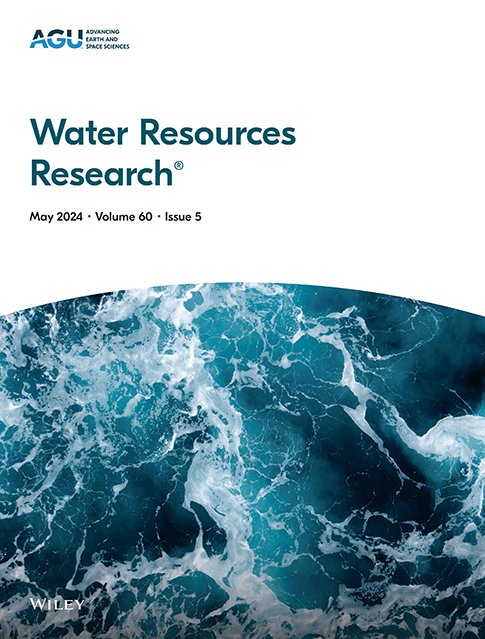变形非饱和土的保水性和导水率曲线新模型
IF 4.6
1区 地球科学
Q2 ENVIRONMENTAL SCIENCES
引用次数: 0
摘要
非饱和土的保水性和导水率曲线是渗流分析的重要参数。文献中的实验结果普遍表明,随着密度的增加,保水曲线的进气量和吸附/解吸速率增大,一定饱和度下的相对水力导率(kr)发生变化。现有模型除考虑进气量的密度依赖性外,未考虑上述现象。本研究旨在通过基于微观分析的实验证据开发新的水力模型来解决这些问题。首先,提出了一个新的模型来模拟孔径分布随土壤密度的演化。对于给定的孔隙,初始尺寸越大,密度增加越大,其初始尺寸与最终尺寸之比越大。在此基础上,导出了一个新的简单的保水性方程,用于预测随着密度的增加,进气量(由于孔径减小)和吸附/解吸速率(由于孔径分布更均匀)的增加。在此基础上,结合土体变形过程中孔隙大小分布和弯曲度的变化,建立了新的kr方程,能够较好地反映kr的变化。实测与计算结果吻合较好。本文章由计算机程序翻译,如有差异,请以英文原文为准。
A New Model for Water Retention and Hydraulic Conductivity Curves of Deformable Unsaturated Soils
The water retention and hydraulic conductivity curves of unsaturated soils are important parameters for seepage analysis. Experimental results in the literature generally show that with increasing density, the air-entry value and adsorption/desorption rate of the water retention curve increase and the relative hydraulic conductivity (kr) at a given degree of saturation changes. The above phenomena, except the density-dependency of air-entry value, have not been considered in existing models. This study aims to address these problems by developing new hydraulic models based on experimental evidence from microscopic analysis. First of all, a new equation was proposed to model the evolution of pore size distribution with soil density. For a given pore, the ratio of its initial to final sizes is higher when the initial size is larger and when there is a greater increase in density. Based on this equation, a new and simple water retention equation was derived to predict the increase in air-entry value (resulting from the reduction in pore size) and the adsorption/desorption rate (due to a more uniform pore size distribution) as density increases. Then, a new equation for kr was developed by incorporating the evolution of pore size distribution and tortuosity upon soil deformation, and therefore it can capture the changes of kr. To validate the above equations, test data from several soils with distinct properties were used. The measured and calculated results are well-matched.
求助全文
通过发布文献求助,成功后即可免费获取论文全文。
去求助
来源期刊

Water Resources Research
环境科学-湖沼学
CiteScore
8.80
自引率
13.00%
发文量
599
审稿时长
3.5 months
期刊介绍:
Water Resources Research (WRR) is an interdisciplinary journal that focuses on hydrology and water resources. It publishes original research in the natural and social sciences of water. It emphasizes the role of water in the Earth system, including physical, chemical, biological, and ecological processes in water resources research and management, including social, policy, and public health implications. It encompasses observational, experimental, theoretical, analytical, numerical, and data-driven approaches that advance the science of water and its management. Submissions are evaluated for their novelty, accuracy, significance, and broader implications of the findings.
 求助内容:
求助内容: 应助结果提醒方式:
应助结果提醒方式:


